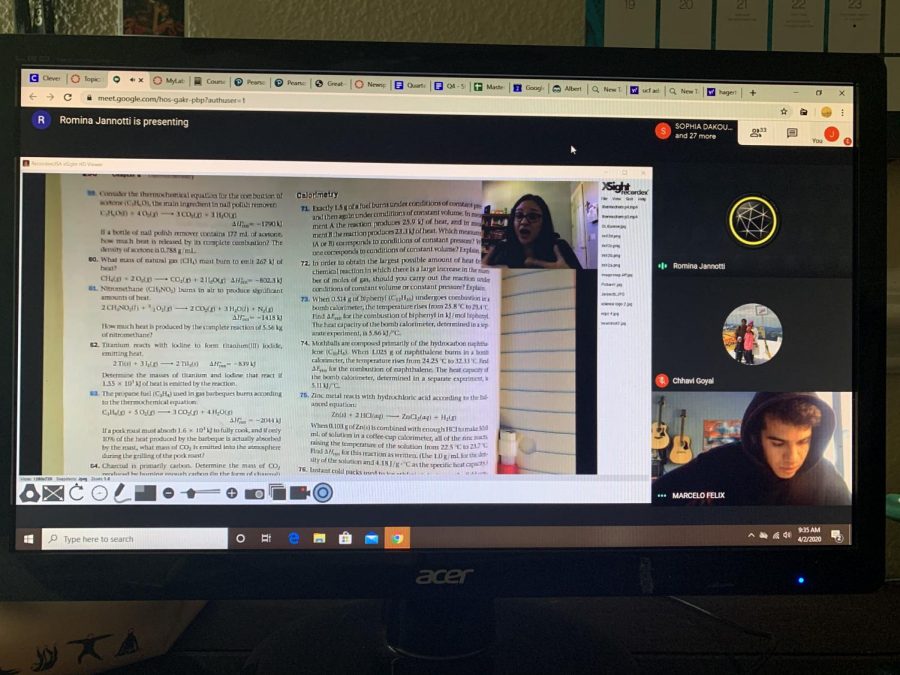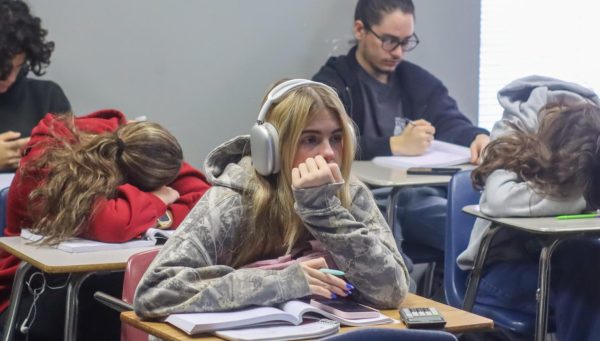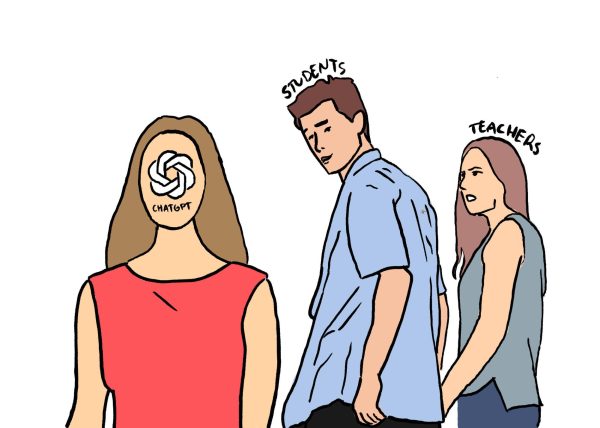School Away From School
photo by Jessica Maldonado
Dr. Jannotti is going over homework problems her AP Chemistry students are having trouble with. She hosts meetings every Monday and Thursday for her AP classes and every Tuesday and Friday for her honor classes.
For sophomore Mia O’Neal, the past couple of days have been an adjustment. She, like everyone else, didn’t think this is how the end of the schoolyear would go. Although things have been smooth overall, there have been a few hiccups. Download problems, slow responses to e-mails – O’Neal is working out the issues to distance learning.
The Coronavirus caused remote learning to replace the traditional way of schooling that teachers and students are used to. In response to this change, the Seminole County Public School system has shifted to education online.
“While students should not be expected to maintain a traditional school day schedule, it’s important to build routine, maintain expectations and promote academic engagement,” Superintendent Walt Griffin said, in his most recent Coronavirus update message posted on the Seminole County Public School’s website.
However, setting up a routine is difficult without the face-to-face classroom experience that includes interaction, the ability to have questions answered right away and in-depth learning.
“If I want to ask a teacher a question, instead of having an immediate response I have to wait about 30 minutes to get that one question answered,” freshman Reagan Fitzgerrald said.
Common solutions teachers are using to answer students’ questions faster and more efficiently include setting up digital meets through video calls, establishing office hours and sending out announcements to students through eCampus.
The way AP World History and European History teacher Erin Foley handles the issue of keeping her students engaged during detailed lectures is by making recorded lectures. Foley learned how to record and publish her lectures to YouTube, providing her students the best resources she could make for them.
Teachers have been put into a tough situation on how to approach problem solving, and when it comes to difficulties students are having with their classes, they have had to learn and use new techniques to teach in the best way they can. This is not always working for students.
“For my classes that require lectures like psychology and math, I find it more difficult to learn,” junior Rebecca Silva said.
Both teachers and students are making the most of the situation, but neither wanted their educational careers to take a turn like this. However, they agree that the flexibility with time that is available when at home and not on campus with a set schedule is favorable, according to Spanish 1 and Leadership teacher Kari Miller.
“The overall transition to online school has been good,” O’Neal said. “The easiest part is being able to pace myself and do the work when I want to.”
Students believe choosing when to do their work is convenient, but that it is also easy to lose track of time and become unmotivated without face to face interaction with a teacher.
Foley, like most teachers, has weekly agendas organized under the Modules tab to keep her students on track and organized in the best way she can.
“Within the week module there are the student assignments. Each module is left open from Monday to Friday,” Foley said. “Each module also contains a discussion board, so students can interact remotely with each other.”
When diving into the learning portions of her modules, Foley links her videos and alternate resources on the page for students to use and take notes from.
Likewise, Miller has a plan for every week, and students are expected to work on three different activities on three different days. She also has links to all the resources that they will need.
“It is hard to build lessons which engage students since they are missing those face-to-face interactions which come with regular schooling,” Foley said. “Because I don’t see them regularly, I can’t engage if they’re struggling or if they need clarification. So each module takes a week but it’s really only two days of work.”
With limited resources and the inability to be in the regular school environment, students and teachers have admitted that they believe students are learning less with only one to two days of work a week, and both prefer to be at school on a regular schedule.
“Teaching is a lot about interacting with students. I like to play games and see feedback from my students,” Miller said. “I miss seeing people and stopping by to chat with other teachers or administrators. I miss hearing about what’s going on with my students.”
The return date for students and staff is May 1 until further notice, but until then, teachers and students will keep doing their best to keep growing and moving forward.
“I would definitely rather go to class because you’re there for a purpose and you have teachers there to keep you focused and on track. Also, seeing your friends is what makes school fun,” Fitzgerald said.
Your donation will support the student journalists of Hagerty High School. Your contribution helps us publish six issues of the BluePrint and cover our annual website hosting costs. Thank you so much!










